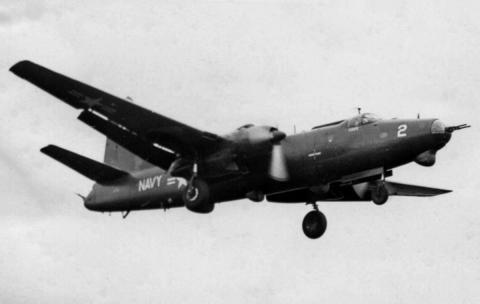MCCLINTICK-FLOYD
FLOYD WALTER MCCLINTICK

AQ1

SURVIVED ATTACK BY NORTH KOREAN JETS
Near the end of World War II, a national espionage reconnaissance program was established to collect electronic intelligence. The program conducted by the Navy was known as ELINT and became highly successful as aerial platforms took to the air gathering information from radio and radar signals from Japan. The aircraft utilized in the program were primarily large land-based patrol aircraft, lightly armed but capable of carrying impressive payloads of electronic monitoring gear, plus large crews. After the defeat of Japan, the program did not disappear altogether as the Naval aviation patrol squadrons retained modest ELINT capabilities and soon the need for renewed electronic reconnaissance efforts became obvious with the development of the Cold War. As relations with the Soviet Union deteriorated, the need to increase ELINT collection became painfully obvious and Navy patrol squadrons were dispatched to gather signals from Soviet Bloc nations.
This became a dangerous assignment requiring the Navy to dispatch vulnerable reconnaissance aircraft close to the shores of Communist targets where they regularly flew without fighter escort. This was a gamble, putting crews’ lives at considerable risk, but the payoff was deemed worth the potential cost. This highly secret program was given the euphemistic title of the Special Electronic Search Project (SESP) by the Navy, which began designing and outfitting special aircraft for these missions to be flown by its patrol squadrons. The flights were particularly dangerous as the slow and vulnerable aircraft were lightly armed, the missions were very long and mostly over water, and the odds of successful crew rescue was minimal at best should help be necessary during the highly secret missions.
During the 1950s and 1960s, hundreds of reconnaissance flights were flown without incident, but occasionally mechanical failure caused the loss of planes and crew. In addition, flights were regularly challenged and sometimes even shot down resulting in lives lost. On June 16, 1959 an incident occurred which disturbed the previously routine peaceful reconnaissance flights. Anticipating a routine flight, Navy P4M1-Mercator (BuNo 122209) of Electronic Countermeasures Squadron One departed Naval Air Station, Atsugi, Japan, carrying a crew of fourteen, and when cruising at 7,000 feet over the Sea of Japan 50 miles off the North Korean coast, it was suddenly attacked from the rear by two North Korean jets. With guns blazing on their first pass, the rear aircraft gun was knocked out, the gunner was seriously injured and he became incapacitated. The pilots immediately dove down until only 50-feet above the ocean where the attacking jets were unable to get below their target to make successful attacks. The jets concentrated their initial gunfire on the two starboard engines, knocking them both out. They next tried to concentrate gunfire on the two port engines but were unsuccessful and after a reported eight passes the jets abruptly left the area, apparently out of ammunition or running low on fuel.
After attempts to restart the two disabled engines were unsuccessful, the pilots were able to nurse the plane several hundred miles to shore even though the aircraft’s rudder had become inoperable from the damage caused by the attack. Skillfully, the pilots were able to land the rudderless P4M1 at Miho Air Base near Atsugi. Both pilots were subsequently awarded the Distinguished Flying Cross for their efforts. Miraculously, the rear gunner was the only member of the fourteen crewmembers injured during the attack and was awarded the Purple Heart. All crewmembers were also awarded the Air Medal. The aircraft was salvaged as not reparable.
Aviation Fire Control Technician First Class Floyd Walter McClintick was a crewmember assigned as a radar operator. Review of readily available historical records revealed little additional identifiable information concerning him in addition to this incident, but do report he was born February 13, 1922 in Nampa, Idaho, and served in the Navy in the South Pacific during World War II. He died October 5, 2000 and is buried at Kuna Cemetery in Kuna, Idaho, where his grave marker carries the inscription: US NAVY - WWII - KOREA - VIETNAM.
P4M1 MERCATOR BUNO-122209 IN FLIGHT
Submitted by CDR Roy A. Mosteller, USNR (Ret)


